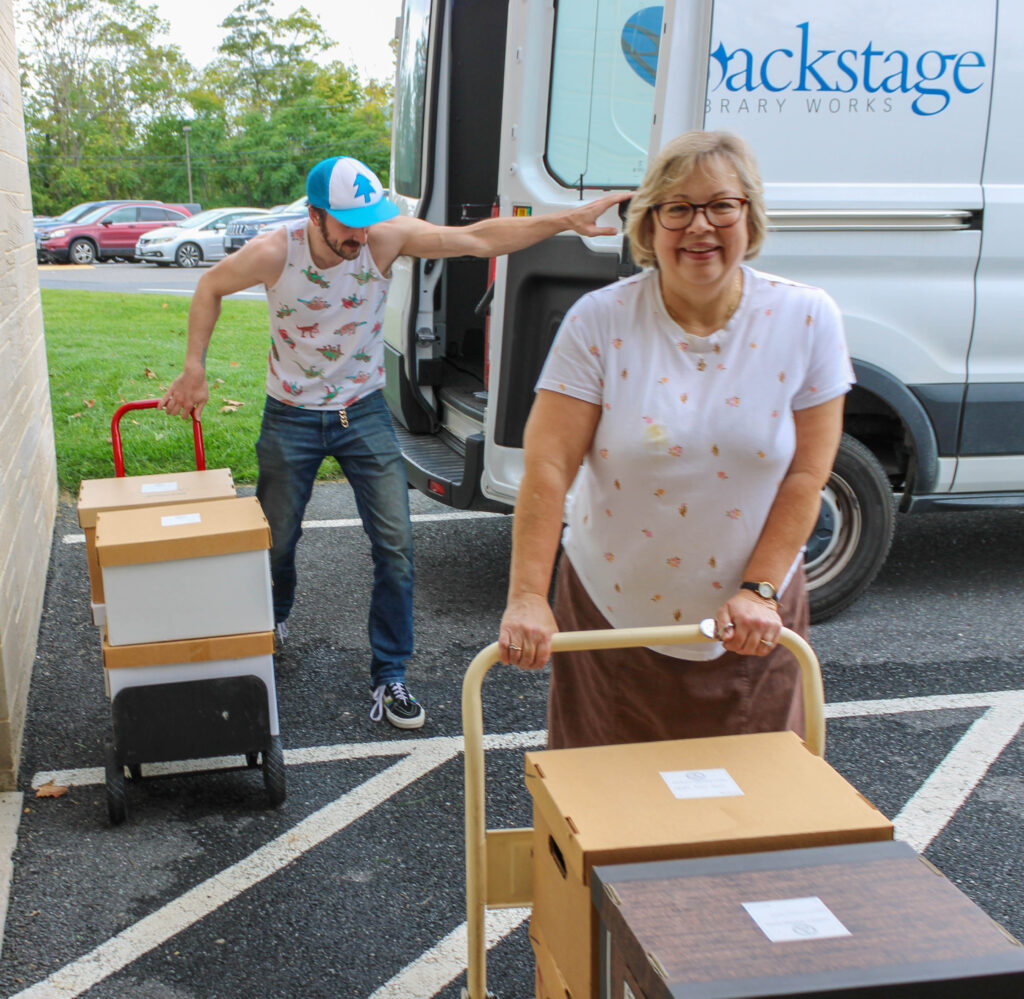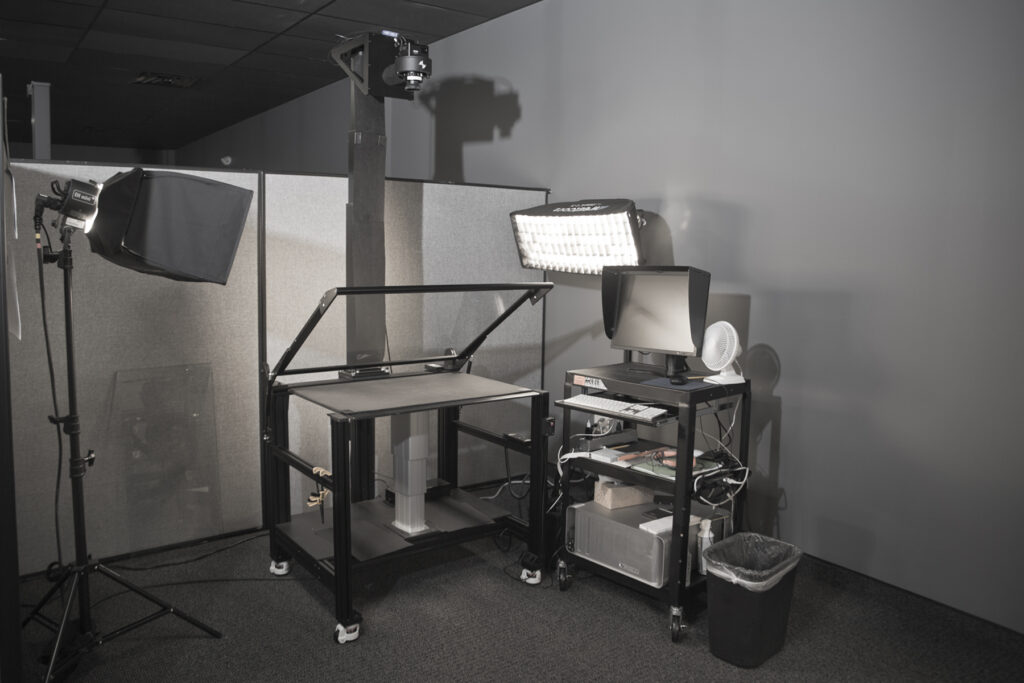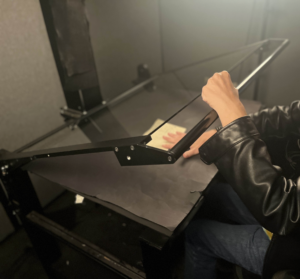by Alex Perran, Backstage Library Works

Marshall Foundation Director of Library and Archives Melissa Davis and Backstage Library Works employee, Ian, transport the first set of newly-digitized documents back to the GCMF library.
When heritage materials like the George C. Marshall Papers leave a library, careful handling begins with the first consideration: how will they be shipped? Sometimes this is with common carrier services, such as UPS or FedEx, where boxes are packed with the specific caretaking needs of documents and books in mind. When a collection needs special attention, it’s not uncommon to seek out a freight shipping company. Backstage Library Works has a van service for just these occasions, providing an insured trip that goes directly between the library and the digitization office where they are then temporarily housed in specialized material storage environments throughout the course of the offsite project. All shipments of the Marshall Papers to and from the Marshall library are transported by Backstage’s van service.
How Archival Collections Are Protected Offsite
Backstage maintains a climate-controlled environment, outfitted with a pre-active dry pipe sprinkler system and security program to make certain that collections are secure and well-main- tained while away from their home shelves. Like a hotel, the bays and shelves are all assigned unique designations, and each item staying at Backstage receives a flag with a barcode linking it to its assigned spot. In this way, books, atlases, maps, posters, manuscripts, archival boxes, photographs, and more are all maintained in an environment suited for archival needs with a consistent record of the custody chain while away from the library.
A number of steps occur before a document is ever placed before a camera for digitization. All projects are directed by an assigned project manager, whose responsibility is to organize the capture schedule and coordinate digitization technicians as well as review materials, ask questions when unique situations evolve, and communicate with the library throughout the course of the project. One subject that comes up frequently is this: will particular items in the collection need to be approached differently to ensure the final captured image has high fidelity to the original? Perhaps there are pages that need mending or dog-ears to be flattened. Maybe the project manager decides that materials will have to be captured using the custom-built 120° cradle (a device that flexes to support a volume’s spine and covers, reducing strain) or the 180° cradle. Occasionally, bound items need to be disbound, meaning that the book block is partially or totally severed from its spine. While this sounds intense, Backstage always employs the least destructive means when such occasions arise, and the library is always consulted to ensure that everyone involved with stewarding the wellness of the collection agrees with the path forward.
Preparing Archival Materials for Digitization
The green flag to proceed with digitization is waved once a production plan is in place, which includes an outline of the technical specifications, the schedule, and established processing plans for any items that need an extra touch to be “camera-ready.” Technicians check out sections of the material from storage, and a typical day consists of calibrating the camera equipment with targets (visual tools that inform whether colors and resolutions are being captured correctly) and steadily digitizing each item in the collection.
Backstage’s camera equipment ranges up to 150 megapixels, utilizing state-of-the-art Phase One cameras and CaptureOne software. Phase One cameras are known for their high-resolution lenses and powerful image sensors. CaptureOne is a leading software in raw file editing and processing, meaning the scans contain enormous amounts of data with minimal processing or compression. The quality of this equipment accounts for just one facet of being able to digitize to FADGI 3- and 4- star requirements—that is, the top-level recommendations established by the Federal Agencies Digital Guidelines Initiative, which is a federally recognized and maintained ruleset that governs how images are captured to ensure they can truly be tagged as “archival.”
Other factors include the environment in which items are digitized and the workflow that is used. For example, Backstage’s digitization studio has dark grey walls and controlled lighting, among other accommodations, which helps manage brightness and contrast of materials being scanned.
Finalizing the Digital Record
Past that, archival digitization requires that institutions follow quality assurance (QA) protocols and maintain some expectations for file naming and generation—and QA begins as soon as materials arrive for digitization. Review steps before and after capture are what promise that each image is aligned correctly and that it accurately represents the original material. Typically, the files that a library will need after digitization are TIFFs (high quality and lossless tagged image files for archiving), searchable PDFs for patron searching and access, and either JPEGS or JPEG2000s, which are best used in conjunction with a digital asset management system. When a project is finished, the original materials and a hard drive of the derivatives are sent back to the library, marking the process complete.
Backstage’s philosophy maintains that every library collection is unique, and this is no less true when it comes to the George C. Marshall Papers and other collections that Backstage has digitized in collaboration with the Marshall Foundation to date. Such projects prove the resourcefulness required to capture the variety of material types and conditions found in heritage collections.


